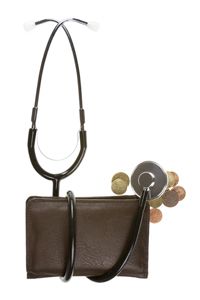
An out-of-pocket expense is a nonreimbursable expense paid by a patient. This could include any medical benefits that your health plan doesn't consider "covered services." But out-of-pocket expenses can also include covered expenses that you are responsible for before your health-plan benefits kick in at 100 percent coverage. When the insurance company pays all of your expenses and you have to pay only your monthly premium, you have reached the out-of-pocket maximum.
Here's where things get a little tricky. Not all of your out-of-pocket expenses go toward this out-of-pocket maximum. So where does a deductible fit in? Would co-pays and monthly premiums count toward the maximum? What about coinsurance?
Advertisement
Let's find out.
A quick explanation of a deductible and coinsurance could be helpful here. A deductible is the amount of money you have to pay before the insurance benefits begin. As a rule, higher deductibles result in lower premiums because the policyholder is willing to shoulder more of the burden of medical expenses.
The deductible and the monthly premium are just the first of many expenses that you must pay. Once you've met the deductible, you may then have to meet a coinsurance amount. Coinsurance is an expense to be paid by the insured that is a percentage of the provider's charge. For example, if a plan has 80/20 coinsurance, you will be required to pay 20 percent of covered services after you have met the deductible and before you reach the out-of-pocket max.
Please be aware that coinsurance and those co-payments that we are all familiar with are not the same thing. A co-payment is a specific dollar amount that you are required to pay at the time of the doctor's visit. In most cases, co-payments are not subject to the deductible, which means that you don't have to meet a deductible before you can take advantage of co-pays. Therefore, the payment does not count toward your out-of-pocket expense maximum.
Now let's learn more about this out-of-pocket expense maximum.
Advertisement

